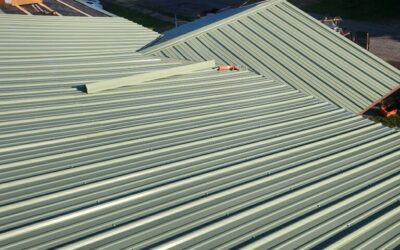What Is the Best Thing to Stop a Roof From Leaking? The Ultimate Guide
A leaky roof is a homeowner’s nightmare. From damp ceiling spots to dripping walls, even a minor leak can lead to mold, rot, structural damage, and costly repairs. If you’re asking, “What is the best thing to stop a roof from leaking?”, you’re asking the right question. The answer? Find the source, block the water, and upgrade key roof components. Let’s dive into the best solutions—from emergency fixes to permanent protection.
1. First Step: Locate the Leak—Don’t Guess
Before applying any fix, focus on leak detection:
- Inspect your attic during rain or use a hose—look for stains, drips, or wet spots.
- Check around chimneys, skylights, vents, pipes, and valleys—they’re common problem areas.
- Follow water trails: drips may show up far from the actual leak source.
- Examine shingles for cracks, missing granules, or warping.
Correct diagnosis saves you time and money by avoiding misdirected repairs.
2. Quick Fixes: Emergency Solutions to Stop Immediate Leaks
Temp Sealant or Tarp
- Use high-quality roofing caulk around flashings, vents, or small holes.
- Secure heavy-duty plastic or tarp to cover the area.
- This is a temporary bandage—seek permanent repair promptly.
Replace Damaged Shingles
- Fix cracked, curled, or missing shingles without delay.
Re‑Secure Flashing
- Tighten or reseal loose flashing around chimneys and edges using roofing cement or install new metal flashings.
Clear Gutters & Downspouts
- Fast-flowing water backs up into roof edges; clean them at least twice a year.
Trim Overhanging Branches
- Remove nearby tree limbs that abrade shingles and promote moss growth.
3. The Permanent Fix: Flashing Upgrades
Flashing—thin metal strips around roof intersections—are key to leak prevention. Key upgrade strategies:
- Replace damaged flashing with corrosion-resistant materials (aluminum, stainless steel, copper).
- Ensure overlapping and waterproof seals around chimneys, valleys, and pipes.
- Maintain flashing annually to avoid separation or rot.
4. Underlayment: Your Hidden Waterproof Shield
Beneath the shingles lies the underlayment, essential for leak defense. Consider:
- Installing ice/water shields in sensitive zones (eaves, valleys).
- Using full-coverage synthetic underlayment instead of basic felt.
- Ensuring quality underlayment during re-roofing for reliable protection.
5. Attic Ventilation: Prevent Condensation Leaks
Poor attic airflow leads to moisture buildup—even under intact shingles. Best practices include:
- Balanced intake vents (soffit, fascia) and exhaust vents (ridge, roof).
- Clearing blocked vents and adjusting airflow during roof work.
Proper ventilation reduces condensation-related leaks and extends roof life.
6. Roof Drainage: Slope, Gutters & Ice Dam Control
Proper Slope and Valley Design
Ensure valleys and pitches direct water flow downhill toward approved flashing and drains.
Gutter Optimization
Install sufficient gutters and use leaf guards to prevent overflow.
Ice Dam Prevention
In cold climates, add insulation and ventilation to stop ice buildup. Consider heat cables or metal drip edges.
7. Material Upgrades: Resist the Elements
Durable roofing materials reduce leak risks:
- Metal roofing sheds snow and water efficiently.
- Class 4 impact shingles resist hail and wind damage.
- EPDM or TPO membranes are ideal for flat roofs with reliable seaming.
Choose quality materials suited to your climate.
8. Maintenance Schedule: Prevention Over Cure
Biannual Roof Inspection
Have a professional inspect shingles, flashings, underlayment, vents, and drainage in spring and fall.
Seasonal Debris Removal
Clear valleys, soffits, and shingles of leaves, moss, and branches.
Gutter Care
Clean twice yearly and monitor guards.
Flashing Checks
Look for cracks, corrosion, or loose flashing.
Attic Monitoring
Check for mushy insulation, dark spots, or mold.
9. When a Full Re‑Roof Is the Answer
Patching may not be enough when:
- Multiple leaks persist
- Hidden deck damage is found
- Attic components look worn or compromised
A full re-roof—new underlayment, flashing, ventilation, slope—often avoids repeated repairs and offers long-term protection.
10. Choosing a Qualified Roofer
Ensure your contractor:
- Is licensed and insured
- Demonstrates experience with flashings, underlayment, and complicated repairs
- Provides detailed written proposals and warranties
- Understands your local climate conditions
- Offers maintenance strategies, not just repairs
Ask about slope details, drainage systems, and how they seal critical areas.
11. Roof Leak Prevention: Local Insight for Ashtabula, OH
- Heavy lake-effect snow and freeze-thaw cycles demand waterproof underlayment and proper slope.
- Moss growth is common—roof washing should be considered.
- Local roofers are familiar with municipal codes and frequent leak sources—choose experience.
12. Summary: What Actually Stops Roof Leaks
| Action | Purpose |
|---|---|
| Locate leak source | Targets the right repair area |
| Upgrade flashing | Seals vulnerable roof intersections |
| Install quality underlayment | Adds protective backup layer |
| Use durable materials | Reduces wear and storm damage |
| Ensure proper ventilation | Prevents condensation and mold |
| Improve slope and drainage | Directs water away safely |
| Maintain regularly | Identifies small issues before they worsen |
| Re‑roof when needed | Resets and improves waterproofing systems |
13. FAQ Section
Q: What’s the fastest way to stop a leak?
A: Apply roof sealant and tarp immediately, then schedule a permanent fix.
Q: Is underlayment alone enough?
A: No—underlayment must be paired with good flashing, slope, and drainage.
Q: Are metal roofs leak‑proof?
A: No roof is impervious, but metal roofs with correct flashings and slope resist leaks well.
Q: How often should I have inspections?
A: Twice a year and after significant storms to catch issues early and add years to your roof’s life.
14. Take Action Now
- Schedule a professional roof inspection.
- Replace/upgrade flashing and underlayment.
- Ensure gutters, slope, drainage, and vents function well.
- Use durable materials and re-roof if necessary.
Ready to Stop Roof Leaks for Good?
At S&K Construction & Remodeling, we excel in leak prevention through expert flashing, underlayment upgrades, and water-wise installations. Reach out for your free inspection and say goodbye to leaks for good.
 (440) 307-2060
(440) 307-2060


